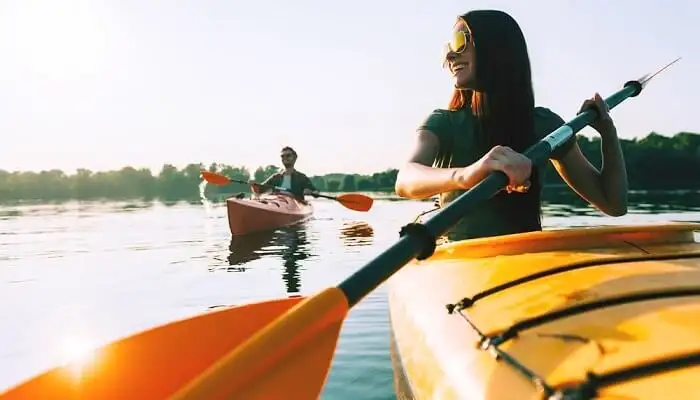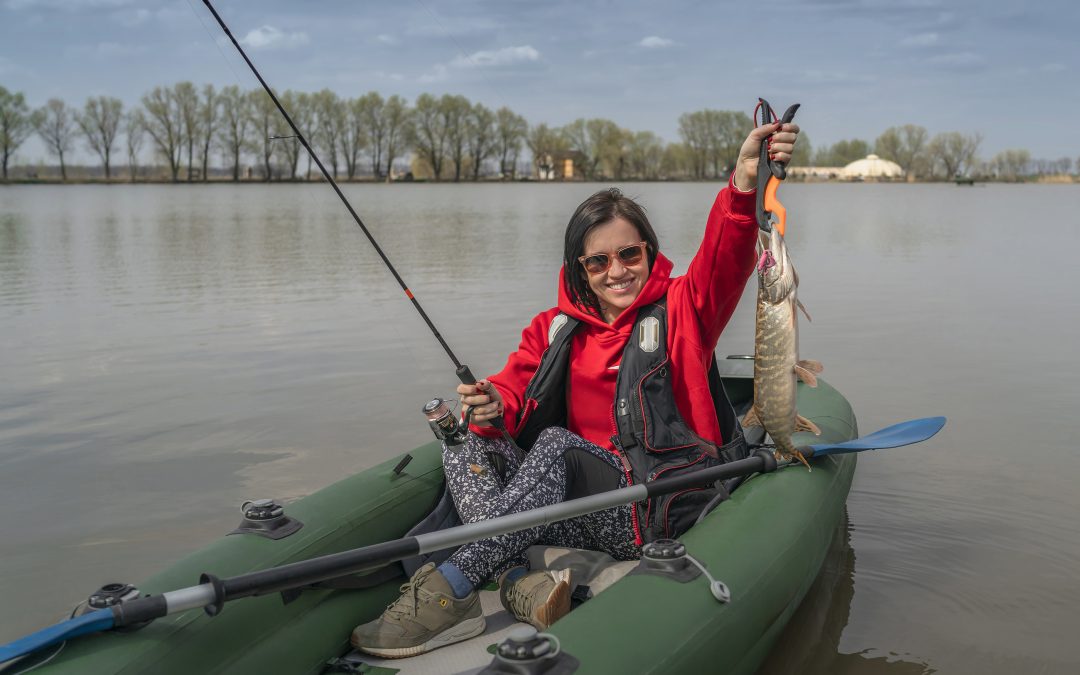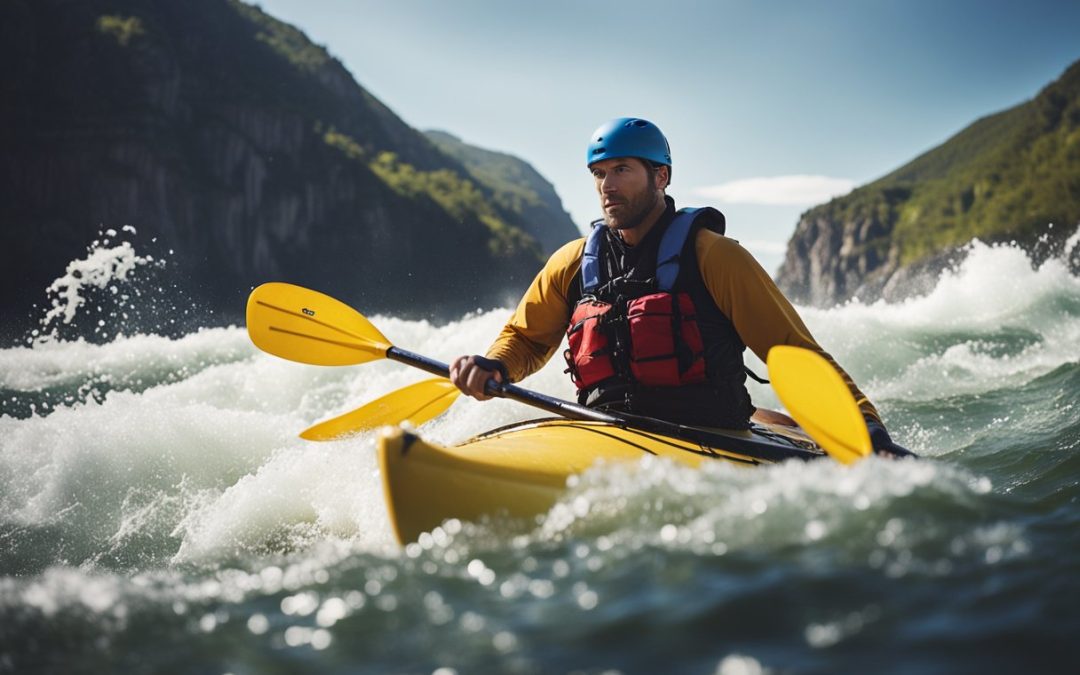How to Choose a Kayak: A Confident and Knowledgeable Guide
Kayaking is a popular outdoor activity enjoyed by many people around the world. Whether it is for fishing, recreational paddling, or white-water rafting, choosing the right kayak is crucial for a safe and enjoyable experience. With so many different types of kayaks available on the market, it can be overwhelming to decide which one to choose.
Understanding the different types of kayaks is the first step in making an informed decision. There are sit-in kayaks, sit-on-top kayaks, inflatable kayaks, and folding kayaks. Each type has its own advantages and disadvantages, so it is important to evaluate which one is best suited for the specific water type and kayaking purpose.
Choosing a kayak based on water type is also important. Different kayaks are designed for different water conditions, such as calm lakes, fast-moving rivers, or open ocean. Kayaks that are designed for one water type may not perform well in another, so it is important to consider the intended water environment. Additionally, evaluating kayak features, material and durability, size and weight considerations, additional accessories, and kayaking purpose are all factors that should be taken into account when making a decision.
Key Takeaways
- Understanding the different types of kayaks is crucial in making an informed decision.
- Choosing a kayak based on water type is important for optimal performance and safety.
- Evaluating kayak features, material and durability, size and weight considerations, additional accessories, and kayaking purpose are all factors to consider when choosing a kayak.
Understanding Different Types of Kayaks
Choosing the right kayak can be overwhelming, especially with so many different types of kayaks available in the market. Understanding the different types of kayaks is essential to select the right one that suits your needs. Here are some of the most common types of kayaks:
Sit-In Kayaks
Sit-in kayaks are the traditional type of kayaks where the paddler sits inside the cockpit. They are designed to provide better protection from the elements and are ideal for cooler climates. Sit-in kayaks are popular for their speed and efficiency, making them perfect for touring and long-distance paddling.
Sit-On-Top Kayaks
Sit-on-top kayaks are becoming increasingly popular due to their ease of use and versatility. Unlike sit-in kayaks, the paddler sits on top of the kayak, and there is no cockpit. They are perfect for warm climates and are ideal for recreational paddling, fishing, and surfing.
Recreational Kayaks
Recreational kayaks are designed for casual paddling and are perfect for beginners. They are generally wider and shorter than touring kayaks and are easy to maneuver. Recreational kayaks are ideal for calm waters such as lakes, ponds, and slow-moving rivers.
Touring Kayaks
Touring kayaks are designed for long-distance paddling and are ideal for experienced paddlers. They are longer and narrower than recreational kayaks and are designed to cut through the water with ease. Touring kayaks are perfect for exploring open waters such as oceans, seas, and large lakes.
Inflatable Kayaks
Inflatable kayaks are becoming increasingly popular due to their portability and ease of storage. They are made from durable materials and are easy to inflate and deflate. Inflatable kayaks are ideal for casual paddling and are perfect for traveling.
Fishing Kayaks
Fishing kayaks are designed specifically for fishing and are equipped with features such as rod holders, storage compartments, and fish finders. They are generally wider and more stable than other types of kayaks and are perfect for fishing in calm waters.
Day Touring Kayaks
Day touring kayaks are designed for day trips and are ideal for exploring calm waters such as lakes and slow-moving rivers. They are shorter and wider than touring kayaks and are easy to maneuver.
Sea Kayaks
Sea kayaks are designed for open water paddling and are ideal for exploring the ocean and large lakes. They are longer and narrower than recreational kayaks and are designed to handle rough water conditions.
Whitewater Kayaks
Whitewater kayaks are designed for paddling in rapids and fast-moving water. They are shorter and more maneuverable than other types of kayaks and are designed to handle the rough water conditions.
Folding Kayaks
Folding kayaks are designed for easy storage and transportation. They are made from durable materials and can be folded down to a compact size. Folding kayaks are ideal for traveling and are perfect for casual paddling.
Tandem Kayaks
Tandem kayaks are designed for two people and are perfect for paddling with a partner. They are wider and more stable than single kayaks and are ideal for recreational paddling and fishing.
Pedal Kayaks
Pedal kayaks are designed with pedals instead of paddles and are perfect for hands-free paddling. They are ideal for fishing and exploring calm waters such as lakes and slow-moving rivers.
Choosing the right kayak can make all the difference in your paddling experience. Whether you’re a beginner or an experienced kayaker, there are a few key factors to consider when selecting a kayak. First, think about the type of water you’ll be paddling in – calm lakes, fast-moving rivers, or open ocean. Next, consider your skill level and how much storage space you need. Finally, think about the size and weight of the kayak, as well as any additional features like adjustable seats or footrests. By taking these factors into account, you can choose a kayak that’s perfect for your needs and preferences.


Choosing Based on Water Type
When choosing a kayak, it’s important to consider the type of water you’ll be paddling in. Different kayaks are designed for different conditions, and choosing the right one can make a big difference in your overall experience. Here are some things to keep in mind when choosing a kayak based on water type:
Lakes, Ponds, and Still Water
For calm, flat water like lakes and ponds, a recreational kayak is a good choice. These kayaks are stable and easy to maneuver, making them ideal for beginners. They’re also great for leisurely paddling and fishing. If you plan on doing longer trips, a touring kayak might be a better option. These kayaks are longer and faster, making them better suited for covering longer distances.
Rivers and Streams
For moving water like rivers and streams, a whitewater kayak is the way to go. These kayaks are designed to handle rapids and fast-moving water. They’re shorter and more maneuverable than recreational or touring kayaks, which makes them better suited for navigating through narrow channels and around obstacles.
Ocean and Rough Water
For open water and rough conditions, a sea kayak is the best choice. These kayaks are longer and more stable than whitewater or recreational kayaks, which makes them better suited for handling waves and wind. They’re also designed to be more comfortable for longer trips, with features like adjustable seats and footrests.
No matter what type of water you plan on paddling in, it’s important to choose a kayak that fits your needs and skill level. Take the time to do your research and try out different kayaks before making a decision. With the right kayak, you’ll be able to enjoy the water and all the adventures it has to offer.
Evaluating Kayak Features
When choosing a kayak, it is important to consider various features that can affect your paddling experience. Here are some key features to evaluate:
Size and Shape
Kayaks come in different sizes and shapes, which can affect their performance and stability. Narrow kayaks are faster, but less stable, while wider kayaks are more stable, but slower. Longer kayaks track better and are faster, while shorter kayaks are more maneuverable. Consider your intended use and skill level when evaluating size and shape.
Cockpit and Seat
The cockpit and seat can greatly affect your comfort and control. Look for a cockpit that is the right size for you and has adjustable foot pedals to help you control the kayak. A comfortable seat with good back support can help prevent fatigue and back pain during long paddles.
Storage Space
Consider the amount of storage space you need for your gear. Look for kayaks with hatches and bungee cords to secure your belongings. Some kayaks also have built-in storage compartments for specific items like fishing gear.
Control Features
Some kayaks come with a rudder or skeg to help you control your direction in windy or choppy conditions. These features can be helpful for advanced paddlers, but may not be necessary for beginners.
Weight Capacity
Make sure to check the weight capacity of the kayak to ensure it can safely support you and your gear. Overloading a kayak can affect its stability and performance.
Scupper Holes
Scupper holes are drainage holes that allow water to drain out of the kayak. They can be helpful for draining water that splashes into the kayak, but can also let water in during rough conditions. Consider the location and size of scupper holes when evaluating a kayak.
By evaluating these key features, you can choose a kayak that is well-suited for your needs and paddling style.
Material and Durability
When it comes to kayaks, material and durability are two crucial factors to consider. Kayaks are available in various materials, each with its own advantages and disadvantages. It is essential to choose a material that is rugged and durable enough to withstand the rigors of kayaking.
Here are some of the most common kayak materials:
- Polyethylene: Polyethylene is a popular material for kayaks due to its affordability and durability. It is resistant to impact and abrasion, making it an excellent choice for kayaking in rocky or shallow waters. However, it is not as lightweight as other materials and can be challenging to repair if damaged.
- Fiberglass: Fiberglass is a lightweight and durable material that is commonly used in high-end kayaks. It is resistant to impact and abrasion and can be repaired relatively easily. However, it is more expensive than polyethylene and can be prone to cracking if exposed to extreme temperatures.
- Kevlar: Kevlar is a high-strength material that is used in some kayaks. It is lightweight and durable, making it an excellent choice for kayaking in rough waters. However, it is the most expensive material and can be challenging to repair if damaged.
- Carbon Fiber: Carbon fiber is a lightweight and high-strength material that is commonly used in racing kayaks. It is incredibly durable and resistant to impact and abrasion. However, it is the most expensive material and can be challenging to repair if damaged.
When choosing a kayak, it is essential to consider the type of water you will be kayaking in and the level of durability you require. A rugged and durable kayak is essential for kayaking in rough waters, while a lightweight and fast kayak is ideal for racing.
In conclusion, choosing the right material for your kayak is crucial for ensuring its durability and longevity. Each material has its own advantages and disadvantages, so it is essential to choose the one that best suits your needs and budget.
Kayaking Purpose
When choosing a kayak, it’s important to consider the purpose of your kayaking adventures. Different types of kayaks are designed for specific activities, so understanding your kayaking purpose can help you choose the right kayak for your needs.
For recreational kayaking, a sit-on-top kayak is a great option. These kayaks are stable, easy to get in and out of, and perfect for calm waters such as lakes and slow-moving rivers. Recreational kayaks are also a great option for beginners.
If you’re planning on touring or exploring, a touring kayak may be a better fit. These kayaks are longer and narrower than recreational kayaks, making them faster and more efficient. They’re also designed for longer trips, with features such as storage hatches and comfortable seating.
For fishing, a kayak with rod holders is a must-have. Fishing kayaks are designed with stability in mind, allowing anglers to stand up and cast with ease. Some fishing kayaks also have additional features such as built-in tackle boxes and fish finders.
Day touring kayaks are a great option for those who want to explore but don’t need the storage and features of a touring kayak. These kayaks are shorter and wider than touring kayaks, making them more stable and easier to maneuver. They’re also a great option for those who want to paddle for a few hours without committing to a longer trip.
For those who want an adrenaline rush, whitewater kayaking is the way to go. Whitewater kayaks are short and maneuverable, designed to navigate rapids and fast-moving water. They’re not recommended for beginners, but experienced paddlers will love the thrill of whitewater kayaking.
Overall, understanding your kayaking purpose is key to choosing the right kayak. Whether you’re looking for a relaxing paddle or an exciting adventure, there’s a kayak out there for you.
Size and Weight Considerations
When choosing a kayak, size and weight are two important factors to consider. The size of the kayak will affect its stability, maneuverability, and speed, while the weight will impact its portability and ease of use.
For individuals who plan to use their kayak for fishing or camping trips, the weight of the kayak is a crucial consideration. A heavier kayak may be more difficult to transport and launch, especially if the individual is traveling alone. In such cases, a lightweight kayak is recommended.
When it comes to size, the length and width of the kayak will determine its stability and speed. Longer kayaks are generally faster, while wider kayaks are more stable. For those who plan to paddle in calm waters, a wider kayak may be the ideal choice. However, if the individual is looking for speed, a longer kayak may be more suitable.
It is also important to consider the weight of the individual and any gear that they plan to bring along on their kayak trips. A heavier individual or a lot of gear will require a larger kayak to accommodate the weight. Additionally, if the individual plans to kayak with children, they may need to consider a larger kayak to ensure everyone fits comfortably and safely.
Overall, when choosing a kayak, individuals should consider their intended use, the weight they plan to carry, and the size and weight of the kayak that will best suit their needs.
Additional Accessories
When it comes to kayaking, there are a variety of additional accessories that can enhance the experience and improve safety. Here are a few accessories to consider:
Spray Skirt
A spray skirt is a must-have accessory for kayaking in rough or cold water conditions. It is a piece of fabric that attaches to the cockpit of the kayak, creating a seal between the paddler and the water. This keeps the paddler dry and warm, and prevents water from entering the kayak. Spray skirts come in different sizes and materials, so it’s important to choose one that fits properly and is appropriate for the conditions.
Bilge Pump
A bilge pump is an essential safety accessory for kayaking. It is used to remove water that has entered the kayak, either from waves or from rain. A bilge pump is especially important for longer trips or in rough water conditions. There are different types of bilge pumps available, including manual and electric, so it’s important to choose one that is reliable and easy to use.
Rudder
A rudder is an accessory that can be added to some kayaks to improve steering and control. It is a flat piece of metal or plastic that is attached to the stern of the kayak. The rudder can be controlled by foot pedals, allowing the paddler to steer the kayak with ease. A rudder is particularly useful in windy or choppy conditions, as it can help keep the kayak on course.
Skegs
Skegs are similar to rudders in that they can improve the handling and control of a kayak. However, skegs are fixed in place and do not move like rudders. They are typically located on the underside of the kayak, near the stern. Skegs can help keep the kayak on course in windy or choppy conditions, and can also improve tracking.
When choosing additional accessories for a kayak, it’s important to consider the type of kayaking that will be done, as well as the conditions that will be encountered. With the right accessories, kayaking can be a safe and enjoyable activity for all skill levels.
Making the Right Choice
Choosing the right kayak is crucial for a beginner to have a successful kayaking experience. With so many options available, it can be overwhelming to make the right choice. Here are a few tips to help you choose the right kayak:
- Determine your kayaking style: Consider where you will be kayaking and what type of kayaking you will be doing. Will you be kayaking in calm waters or rapids? Will you be kayaking for exercise or leisure? Answering these questions will help you choose the right type of kayak.
- Consider maneuverability: A beginner should choose a kayak that is easy to maneuver. A shorter kayak with a wider beam will provide more stability and maneuverability. This will make it easier to control the kayak in the water.
- Check the weight capacity: Make sure the kayak can support your weight and any gear you may need to bring along. Choose a kayak with a weight capacity that exceeds your body weight to ensure safety.
- Test it out: Before making a purchase, try out the kayak to see how it feels. Many kayak rental shops offer demos, which can help you get a feel for the kayak before making a purchase.
- Consider the cost: Kayaks come in a wide range of prices. Determine your budget and choose a kayak that fits within that budget. Remember, a more expensive kayak does not necessarily mean it is better for a beginner.
By following these tips, a beginner can make an informed decision when choosing a kayak. Choosing the right kayak will ensure a safe and enjoyable kayaking experience.










